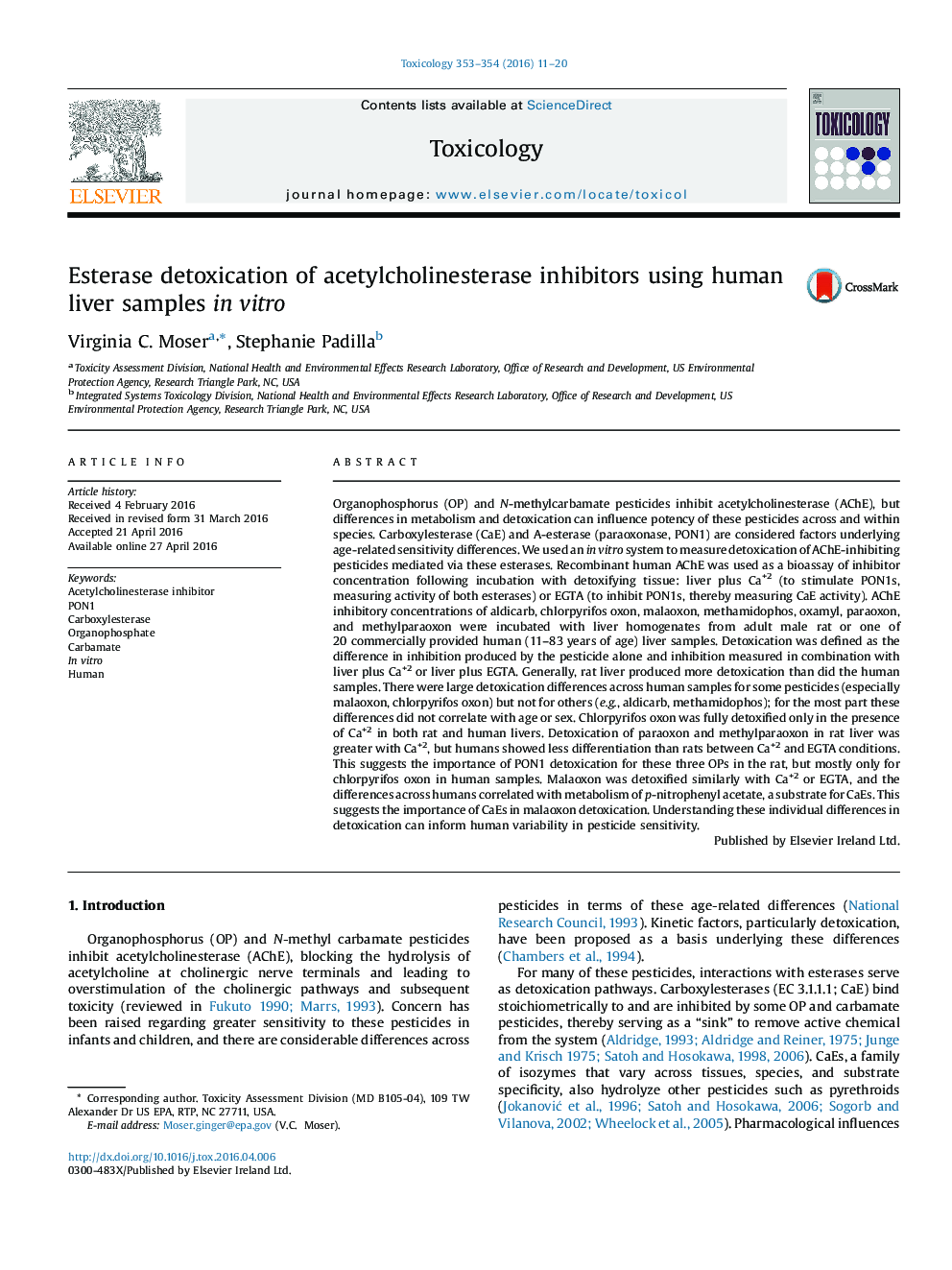| کد مقاله | کد نشریه | سال انتشار | مقاله انگلیسی | نسخه تمام متن |
|---|---|---|---|---|
| 2595451 | 1562311 | 2016 | 10 صفحه PDF | دانلود رایگان |
Organophosphorus (OP) and N-methylcarbamate pesticides inhibit acetylcholinesterase (AChE), but differences in metabolism and detoxication can influence potency of these pesticides across and within species. Carboxylesterase (CaE) and A-esterase (paraoxonase, PON1) are considered factors underlying age-related sensitivity differences. We used an in vitro system to measure detoxication of AChE-inhibiting pesticides mediated via these esterases. Recombinant human AChE was used as a bioassay of inhibitor concentration following incubation with detoxifying tissue: liver plus Ca+2 (to stimulate PON1s, measuring activity of both esterases) or EGTA (to inhibit PON1s, thereby measuring CaE activity). AChE inhibitory concentrations of aldicarb, chlorpyrifos oxon, malaoxon, methamidophos, oxamyl, paraoxon, and methylparaoxon were incubated with liver homogenates from adult male rat or one of 20 commercially provided human (11–83 years of age) liver samples. Detoxication was defined as the difference in inhibition produced by the pesticide alone and inhibition measured in combination with liver plus Ca+2 or liver plus EGTA. Generally, rat liver produced more detoxication than did the human samples. There were large detoxication differences across human samples for some pesticides (especially malaoxon, chlorpyrifos oxon) but not for others (e.g., aldicarb, methamidophos); for the most part these differences did not correlate with age or sex. Chlorpyrifos oxon was fully detoxified only in the presence of Ca+2 in both rat and human livers. Detoxication of paraoxon and methylparaoxon in rat liver was greater with Ca+2, but humans showed less differentiation than rats between Ca+2 and EGTA conditions. This suggests the importance of PON1 detoxication for these three OPs in the rat, but mostly only for chlorpyrifos oxon in human samples. Malaoxon was detoxified similarly with Ca+2 or EGTA, and the differences across humans correlated with metabolism of p-nitrophenyl acetate, a substrate for CaEs. This suggests the importance of CaEs in malaoxon detoxication. Understanding these individual differences in detoxication can inform human variability in pesticide sensitivity.
Journal: Toxicology - Volumes 353–354, 15 April 2016, Pages 11–20
